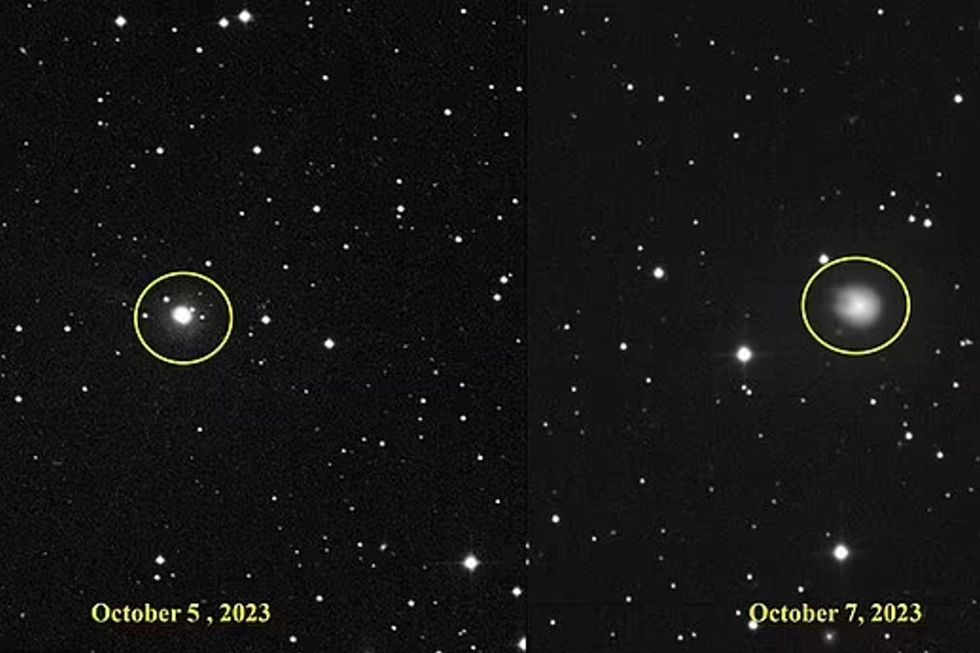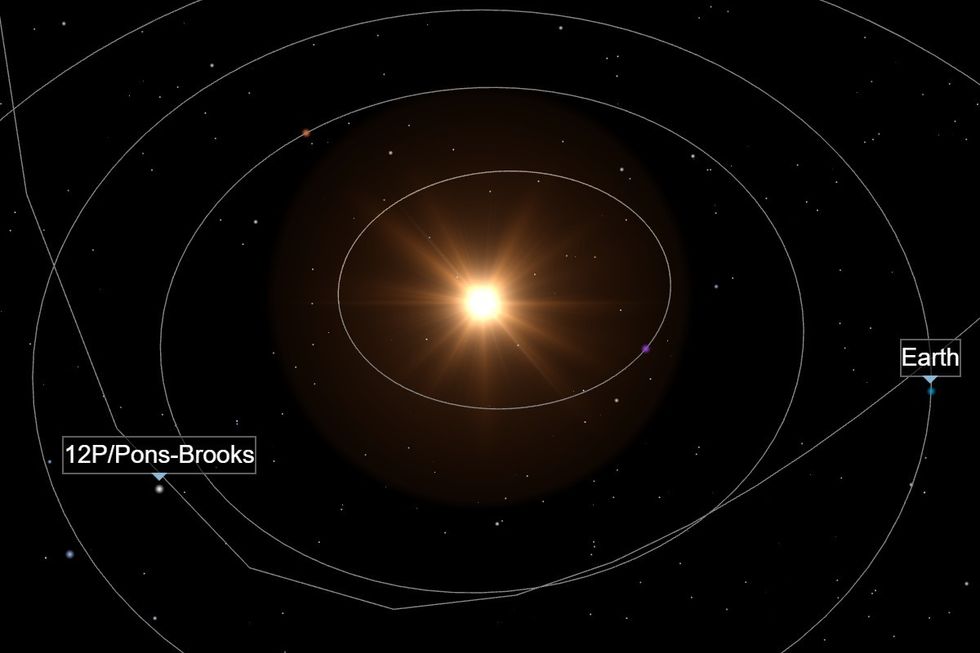Comet three times size of Everest racing towards Earth after violent explosion
CometChasers/Twitter
The comet will be visible to the naked eye at its closest point to Earth
Don't Miss
Most Read
Trending on GB News
A huge comet, three times the size of Mt Everest is racing towards Earth, astronomers have revealed.
The comet, named 12P/Pons-Brooks will narrowly miss Earth on April 21, 2024.
Estimated to have a diameter of 18.6 miles, 12P/Pons-Brooks is made of ice, dust and gases and is known as a cryovolcanic comet.
WATCH NOW: SpaceX launches Falcon 9 rocket
When heated by the sun, pressure begins to build inside the comet until it explodes.
Telescope imagery suggests the comet has exploded twice in as little as four months
According to modelling, 12P/Pons-Brooks will pass between the orbits of Venus and Earth, but by the time it does, the Earth will be safely tucked away on the other side of the Sun.
The space rock is around the same size as Halley’s comet and has a similar timed orbit to history’s most famous comet.
LATEST DEVELOPMENTS:
Image showing P12/Pons-Brooks comet before and after the explosion
Eliot Herman/Twitter
Most comets take thousands of years to complete their orbits.
However 12P/Pons-Brooks, which was first discovered in 1812, completely orbits the sun every 71 years.
It was last visible to the Earth in 1954.
Following its close brush with the Earth, the comet will be flung back out into the outer solar system and will not return until 2095.

12P/Pons-Brooks will pass between the orbits of Earth and Venus
Spacereference.org
Next April, you’ll be able to see the comet looking in the East-North-East direction at an altitude of 36 degrees above the horizon.
Although 12P/Pons-Brooks appears to be quite volatile, the title of the most explosive comet in the solar system belongs to 29P/Schwassmann-Wachmann which orbits the sun just beyond Jupiter.
29P/Schwassmann-Wachmann has been observed to erupt around 20 times per year and is around 37 miles in diameter.
In December 2022, the comet saw its largest eruption in 12 years and is believed to have thrown 1 million tonnes of debris into space.








